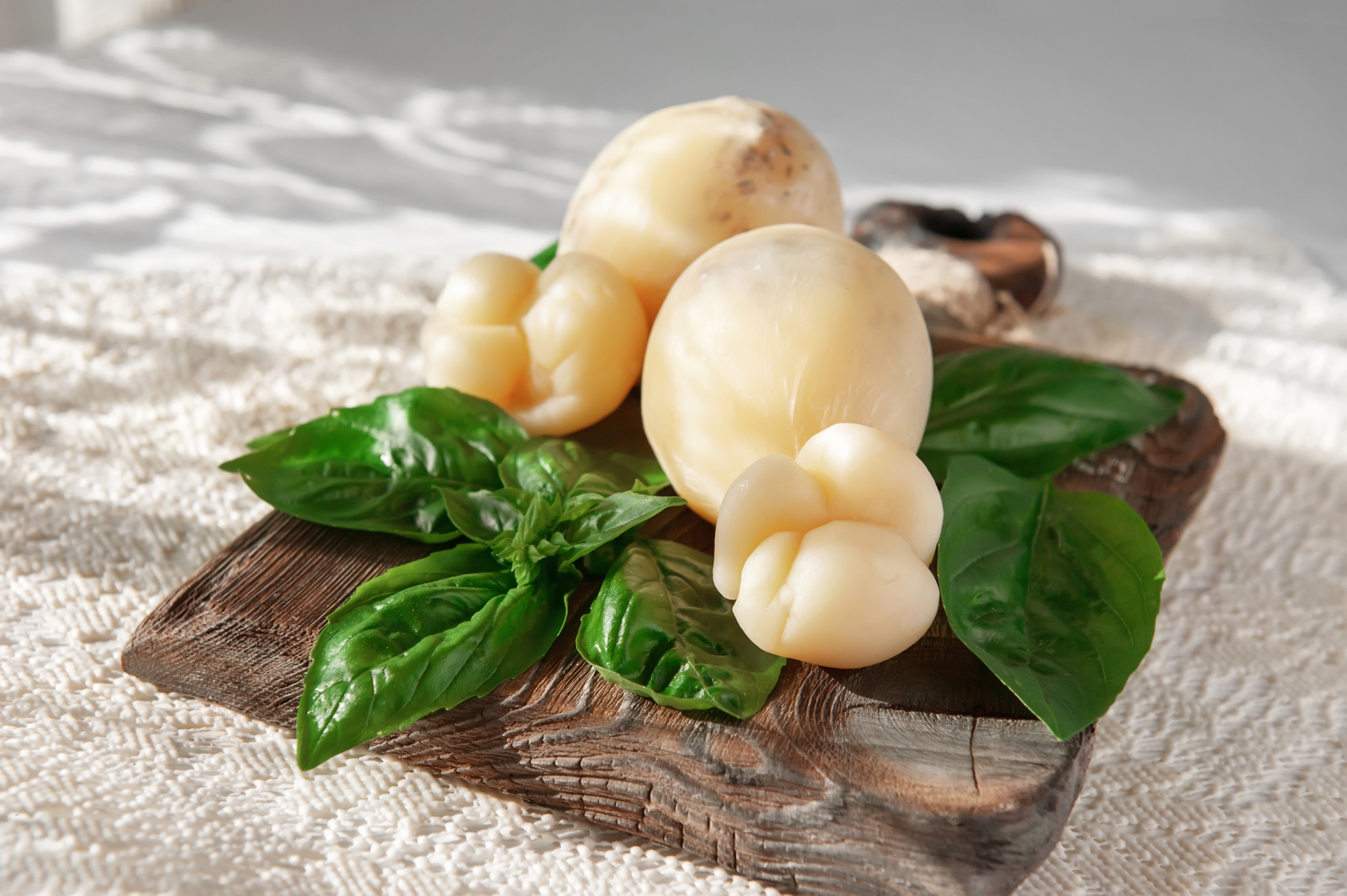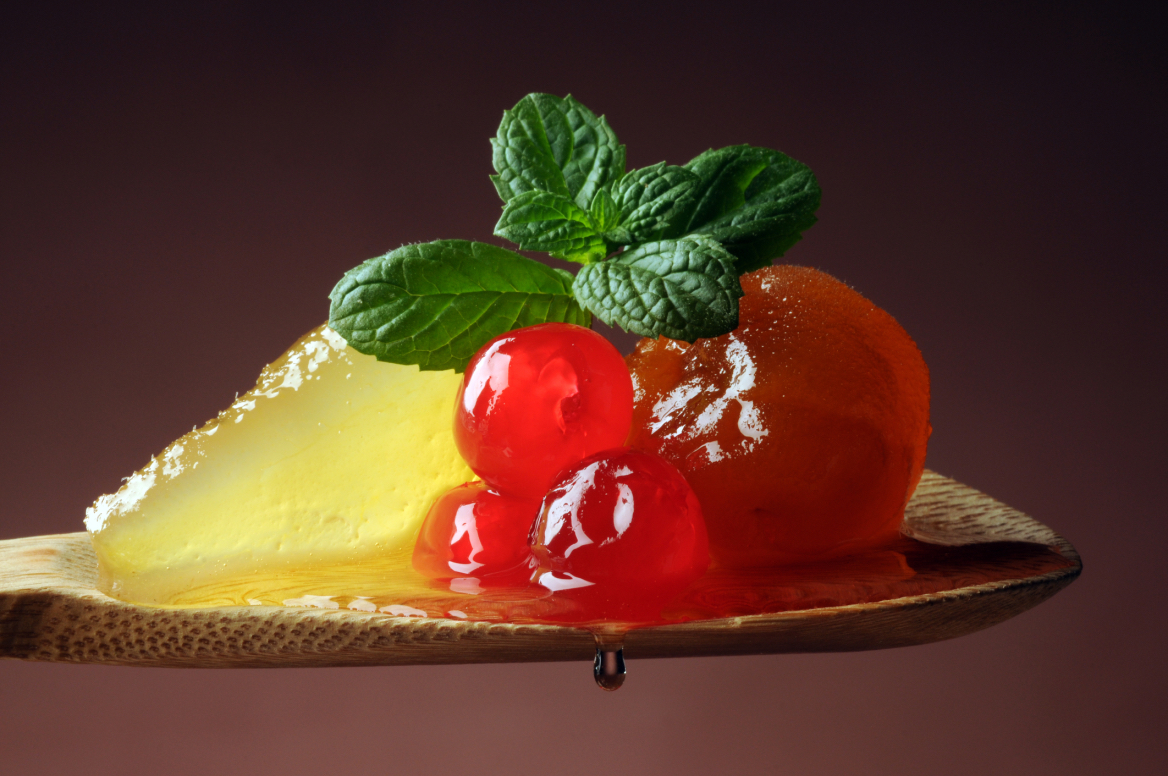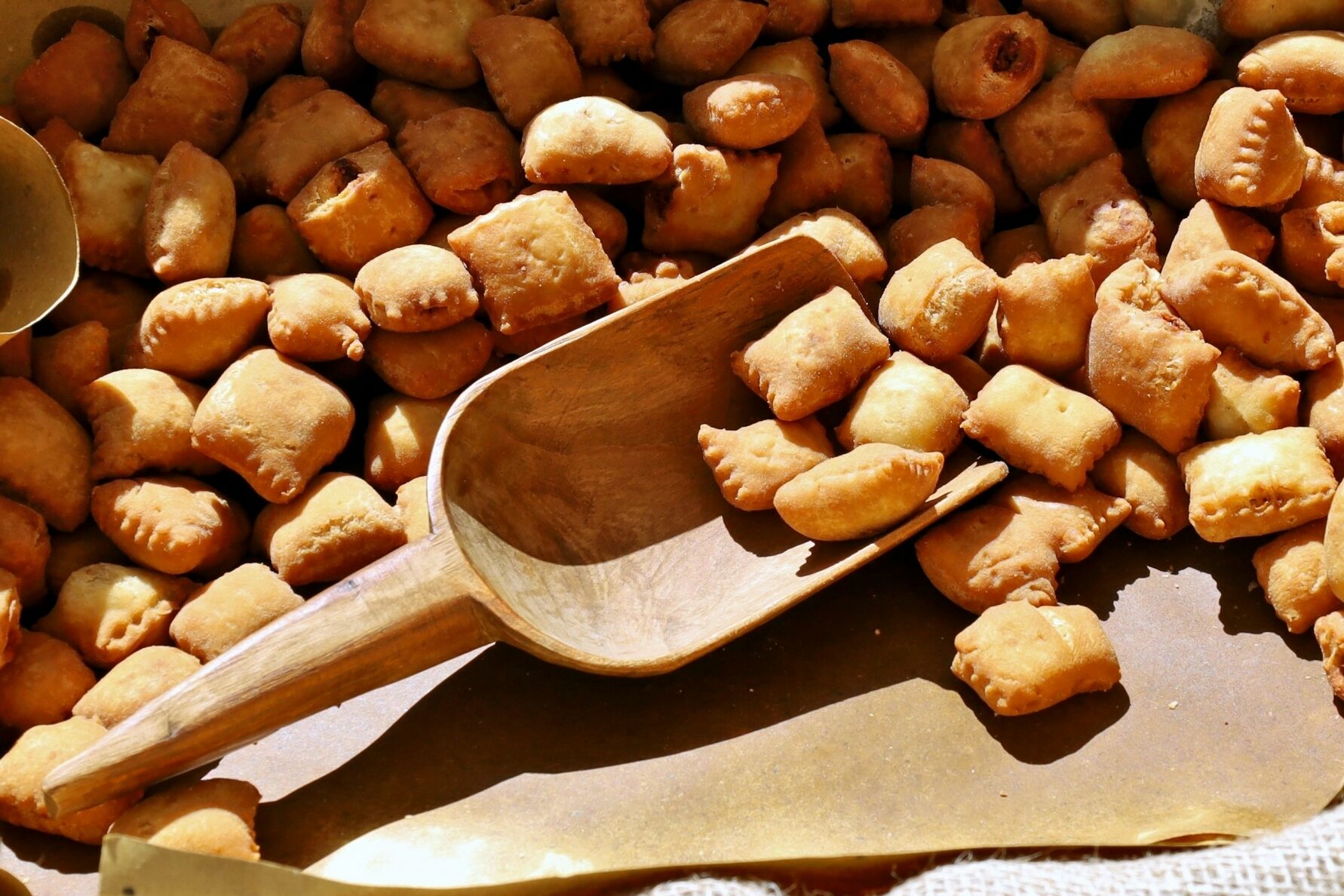You may know her from the “scandalous” Sicilian dessert, or at least have seen it in photos. Small mounds, covered in a layer of sugary, white marzipan and adorned with a candied cherry on top. It’s also popular in iconic religious imagery, with a painting revealing the saint who is holding a pair of cakes on a plate. Some say these mini cassate resemble Etna in the winter time, the cherry representing lava flow, but side by side, le minne or i minnuzzi actually represent the breasts of Saint Agatha and how she suffered for her faith — and they are just one of the many traditions that dominate the Festival of Saint Agatha, celebrated every year in Catania in early February.
The sweet dessert is an homage to the woman-turned-saint, who suffered through gruesome tragedy because she refused to turn against her religious devotion. Legend has it that during the 3rd century, Agatha, a beautiful young woman from Catania, had already devoted her life to God when Governor Quinziano decided he wanted her to be his bride. Upon her refusal, she was tortured, her breasts were sliced off, and she was murdered. She quickly became a martyr, and just a year after she died in 252 AD when Mount Etna erupted, many attributed the staunch in the lava flow to Agatha’s veil, that which had been preserved and carried around town. This, in addition to her resilience and maintenance of her virginity and purity despite the torture she had been subjected to, helped usher her into sainthood. The annual festival now draws nearly one million visitors and is one of the largest in the Catholic religion, alongside Holy Week in Seville, Spain, and the Corpus Christi festival in Cusco, Peru.
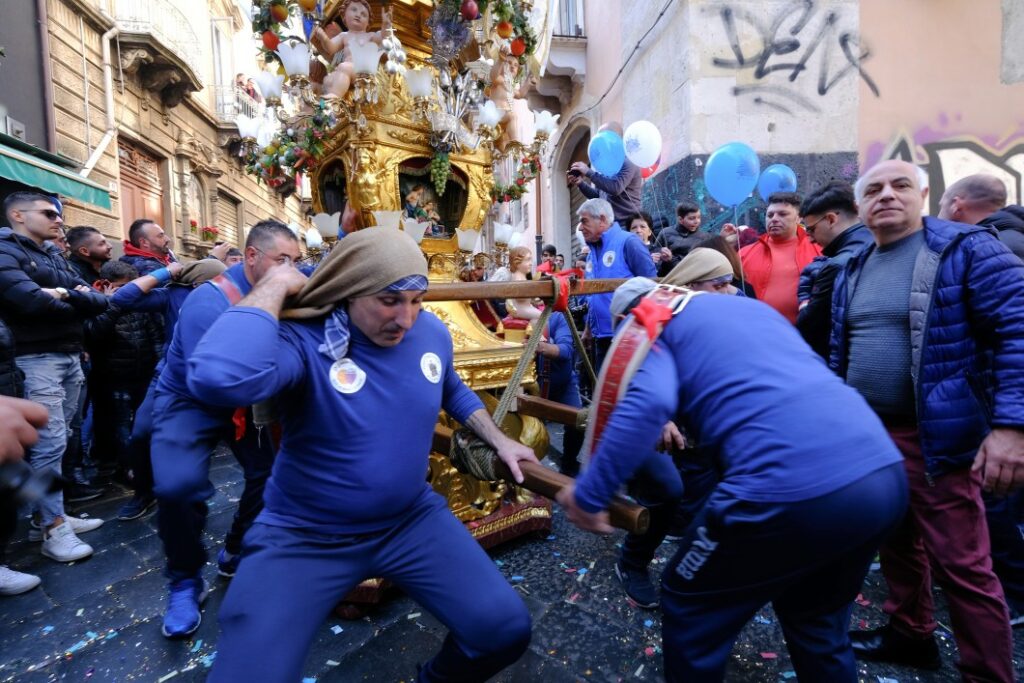
From February 3rd to the 5th, the day of Agatha’s death, Catania honors the saint and brims to life with religious processions and the aroma of various street foods as locals, religious visitors, and other tourists make their way through town. Day one begins with Agatha’s remains being transported in an elaborate ferculum, an embellished silver carriage, during the procession of the Candelore. Eleven candelore, or large golden sculptures, are used to make a traditional offering of the wax. That night, the sky is lit up with fireworks to cap off the events of the day.
The next day begins with Aurora’s Mass, followed by another procession of locals dressed in white and black headscarves, who wave handkerchiefs and cry out “Tutti devoti tutti, cittadini, viva Sant’Agata!” (Roughly translated as: “We all devoted citizens, long live Saint Agatha!”)
Agatha’s remains are honored and carried throughout the town in processions both days until returning to the cathedral in Piazza San Domenico. Meanwhile, devotees and tourists take to the streets, visiting food vendors peddling traditional snacks and street fare in honor of Catania’s patron saint. The iconic minne di Sant’Agata are ubiquitous, each one essentially a small cassata, or cassatella, the marzipan topping hiding the sponge cake within that’s topped with a ricotta and candied orange peel and chocolate chip filling.
Saint Agatha is celebrated not only with cake but with portable savory foods as well. While arancini are eaten year-round, they are popular during this event, as are la calia and la simenza (toasted chickpeas and pumpkin seeds). Horse meat is a common southern Italian and Sicilian street food, and is no less the case during these festivities when it’s served in a panino or in the form of meatballs. Grilled kebab-like skewers of pancetta wrapped around spring onion stalks, known as le cipollate make for a savory snack to offset the dolci to come. Dried fruits and nuts, while ever-popular in the Sicilian sweet-making tradition, take center stage during the festivities. Dates are often stuffed with marzipan, and the smell of a special nougat, or torrone di Sant’Agata perfumes the air, with its decadent mix of almonds, pistachios, and sesame seeds wrapped with honey, while another version with pasta reale (almond paste), candied citrus peel and dried fruits entices those with sugar-cravings.
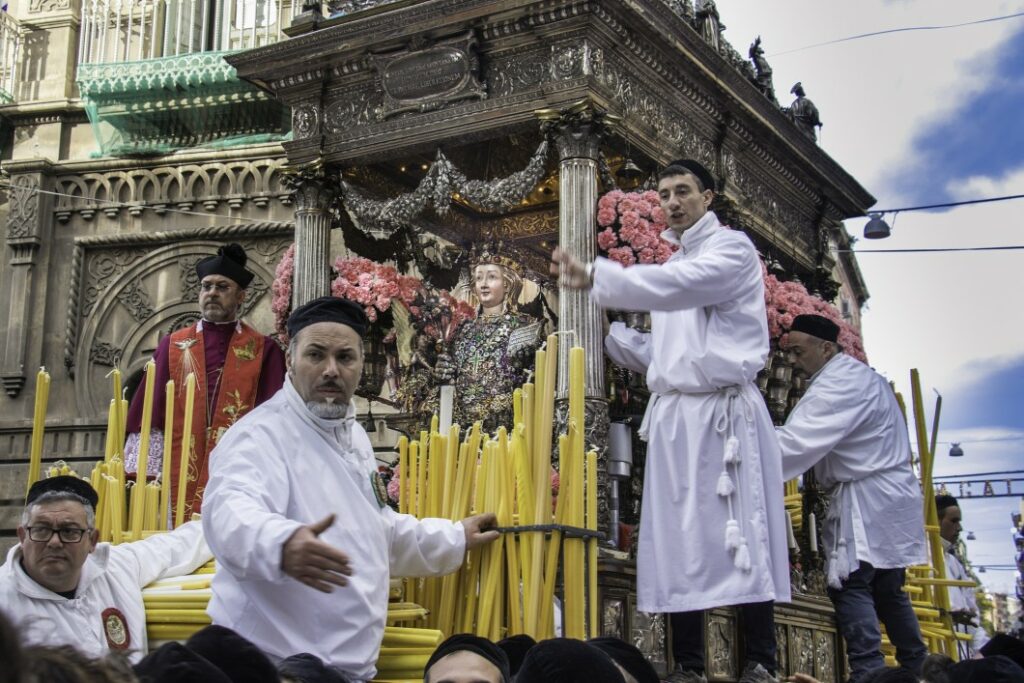
I crispeddi or crispelle di riso o di pane (rice or semolina, water, and yeast fritters) are Catania’s version of zeppole, Carnival street fritters. The shape determines the filling of these deep-fried treats: the straight, lengthwise fritters are recognizable for their anchovy filling, and the round ones are stuffed with ricotta.
One last iconic treat to keep an eye out for are le olivette, green marzipan shaped to resemble olives and coated in granulated sugar. Although there are several stories used to explain the candy, one is that Agatha was at one point saved by an olive tree that appeared when she was being chased by Quinziano’s henchmen; the sweet was thus made to bear a resemblance to the fruit that kept her safe.
The stories behind Saint Agatha’s turn to sainthood might turn one’s stomach, but the chance to see and partake of the local rituals and culinary traditions held in her honor makes for a unique way to better understand Sicilian culture.




